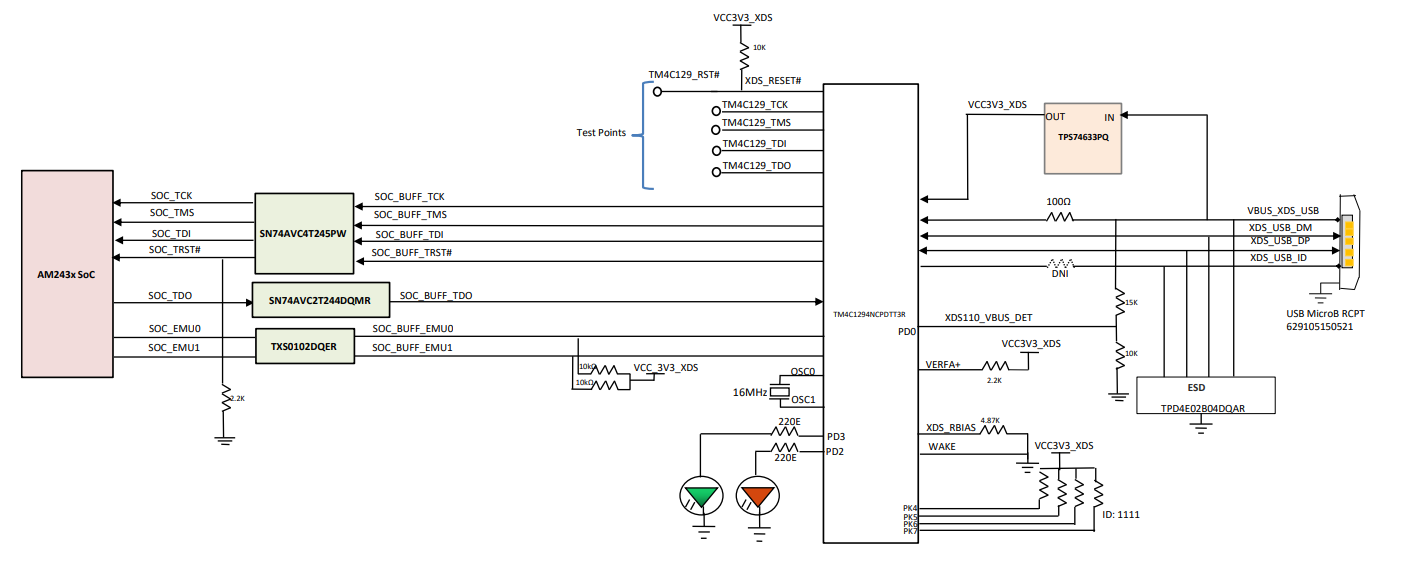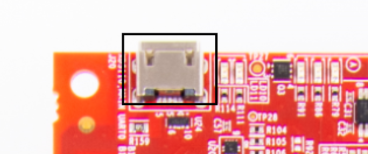SPRUJ12F August 2021 – January 2024 AM2431 , AM2432 , AM2434
- 1
- Abstract
- Trademarks
- 1Preface: Read This First
- 2Kit Overview
- 3Board Setup
-
4Hardware Description
- 4.1 Functional Block Diagram
- 4.2 BoosterPack Headers
- 4.3 GPIO Mapping
- 4.4 Reset
- 4.5 Clock
- 4.6 Memory Interface
- 4.7 Ethernet Interface
- 4.8 USB 2.0 Interface
- 4.9 I2C Interface
- 4.10 Industrial Application LEDs
- 4.11 UART Interface
- 4.12 eQEP Interface
- 4.13 CAN Interface
- 4.14 FSI Interface
- 4.15 JTAG Emulation
- 4.16 Test Automation Interface
- 4.17 SPI Interface
- 5References
- A E3 Design Changes
- B Revision A Design Changes
- Revision History
4.15 JTAG Emulation
The following sequence should be followed for proper functioning of JTAG:
- Power the board by connecting the Type-C USB connector with 5 V at 3A.
- Connect the micro-B USB cable for JTAG emulation into J20 once after powering the board (Hot Plug).
The AM243x LaunchPad includes the necessary circuitry for XDS110 emulation. The XDS110 class on-board emulation is used to support testing of software builds. The connection for the emulator uses a USB 2.0 micro-B connection (J20) and the circuit acts as a powered USB peripheral device. The VBUS power from the connector is used to power the emulation circuit such that the connection to the emulator is not lost when power to the LaunchPad is removed. Voltage translation buffers are used to isolate the XDS110 circuit from the rest of the LaunchPad.
An ESD protection diode (TPDE02B04DQAR) is provided on the USB signals to steer ESD current pulses to VCC or GND. The ESD protection diode protects against ESD pulses up to ±2.5 kV Human-Body Model (HBM) as specified in ANSI/ESDA/JEDEC JS-001 and provides ±12 kV contact discharge as well as ±15 kV air-gap discharge as specified in IEC 61000-4-2.
 Figure 4-26 JTAG Interface
Figure 4-26 JTAG Interface Figure 4-27 Micro-B USB Connection for
JTAG
Figure 4-27 Micro-B USB Connection for
JTAG